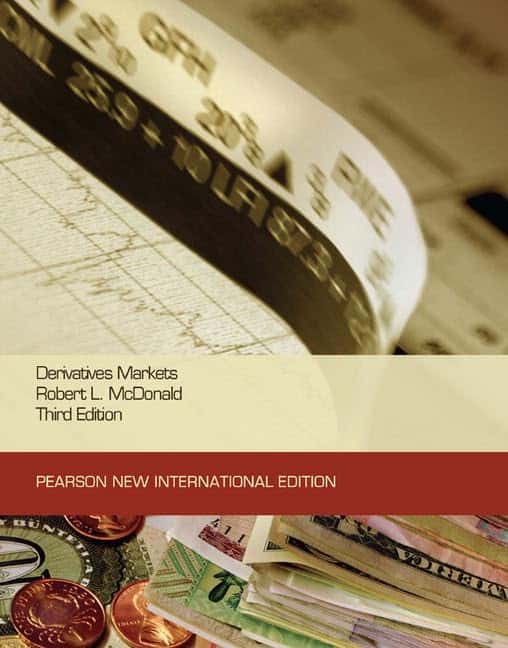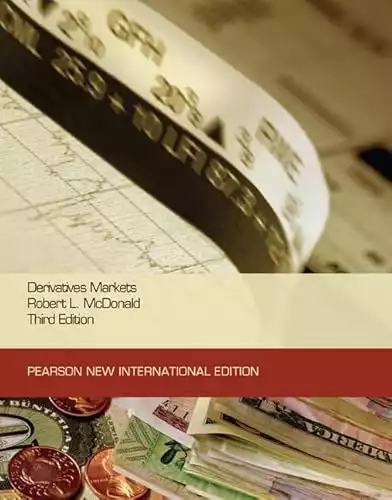Overview : Derivatives Markets
- Book Title: Derivatives Markets
- Author: Robert L. McDonald
- Publication Date: March 2002 (First Edition)
- price: $85.00
- Pages: 450
Overview of the Book
Robert L. McDonald is a seasoned finance professional with deep expertise in derivatives trading, risk management, and financial modeling. With years of experience in the markets, they aim to simplify complex financial concepts for readers.
Introduction
In the ever-evolving world of finance, few topics are as complex and misunderstood as derivatives. Robert L. McDonald's "Derivatives Markets" offers a beacon of clarity in this intricate landscape, providing readers with a thorough and accessible exploration of these sophisticated financial instruments. This review delves into the key aspects of McDonald's work, examining its value for students, professionals, and financial enthusiasts alike.
Book Summary: Demystifying the World of Derivatives
"Derivatives Markets" stands as a comprehensive guide to understanding financial derivatives, their applications, and their impact on global markets. McDonald expertly breaks down complex concepts into digestible segments, making the book an invaluable resource for readers at various levels of financial expertise.
Key topics covered include:
- Fundamental concepts of forwards, futures, options, and swaps
- Historical context and evolution of derivatives
- Pricing models, including the Black-Scholes-Merton model
- Risk management strategies and portfolio applications
- Market dynamics and the role of derivatives in financial stability
Analysis of Themes: From Theory to Practice
Bridging Academic Concepts with Real-World Applications
One of the book's strongest attributes is its ability to connect theoretical concepts with practical applications. McDonald uses a variety of case studies and real-world examples to illustrate how derivatives function in actual market scenarios. This approach not only enhances understanding but also prepares readers for the complexities of real-world financial decision-making.
Risk Management and Market Volatility
The author provides a balanced view of derivatives' role in risk management, acknowledging both their potential for hedging and their capacity to amplify market volatility when misused. This nuanced discussion is crucial for readers to develop a comprehensive understanding of derivatives' place in the broader financial ecosystem.
Technological Innovation in Derivatives Markets
McDonald doesn't shy away from addressing how technology is reshaping derivatives trading. His insights into algorithmic trading and the impact of big data on market dynamics offer readers a forward-looking perspective on the future of financial markets.
Writing Style: Clarity Meets Depth
McDonald's writing style strikes an impressive balance between accessibility and depth. Complex mathematical concepts are explained with remarkable clarity, making the material approachable even for those without extensive quantitative backgrounds. The author's use of analogies and real-world examples further aids in demystifying challenging topics.
"The key to understanding derivatives is to recognize that they are simply agreements between two parties about the terms of a potential future transaction." - Robert L. McDonald
Strengths and Weaknesses
Strengths:
- Comprehensive coverage of derivatives markets
- Clear explanations of complex mathematical concepts
- Abundant real-world examples and case studies
- Excellent educational features, including problem sets and solutions
Weaknesses:
- May be too technical for absolute beginners in finance
- Some readers might find the mathematical sections challenging
Comparison to Other Works
When compared to other texts on derivatives, such as John Hull's "Options, Futures, and Other Derivatives," McDonald's book stands out for its approachability without sacrificing depth. While Hull's work is often considered more technically rigorous, "Derivatives Markets" offers a more balanced approach that caters to a wider audience, from students to practitioners.
Highlights from Derivatives Markets
- Introduction to derivatives: Explains the basics of derivatives like futures, options, and swaps.
- Risk management: Highlights how derivatives are used to hedge risk in financial markets.
- Pricing models: Discusses mathematical models for pricing derivatives, such as the Black-Scholes model.
- Market dynamics: Explores the role of derivatives in global financial markets and their impact on liquidity.
- Regulatory environment: Examines the evolving regulations and oversight in the derivatives market.
- Strategies: Describes common trading strategies involving derivatives for speculation and hedging.
Conclusion: A Must-Read for Finance Enthusiasts
"Derivatives Markets" by Robert L. McDonald is an exceptional resource for anyone looking to deepen their understanding of financial derivatives. Its comprehensive coverage, clear explanations, and practical insights make it an invaluable tool for navigating the complexities of modern financial markets.
Whether you're a finance student, a professional looking to expand your knowledge, or an investor interested in understanding the tools that shape market dynamics, this book offers invaluable insights. As the financial world continues to evolve, with trends like cryptocurrencies and decentralized finance emerging, the foundational knowledge provided in "Derivatives Markets" becomes even more crucial.
For those ready to embark on this educational journey, "Derivatives Markets" is available for purchase through various online retailers. Investing in your financial education is a step towards more informed decision-making in personal finance and investing strategies.





